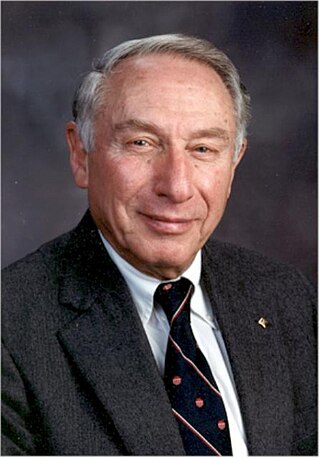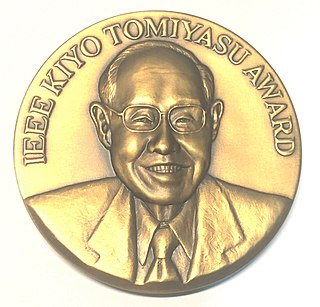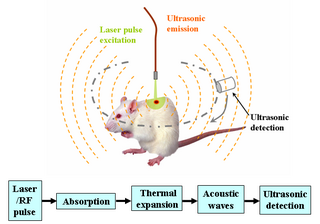
Biomedical engineering (BME) or medical engineering is the application of engineering principles and design concepts to medicine and biology for healthcare purposes. BME is also traditionally logical sciences to advance health care treatment, including diagnosis, monitoring, and therapy. Also included under the scope of a biomedical engineer is the management of current medical equipment in hospitals while adhering to relevant industry standards. This involves procurement, routine testing, preventive maintenance, and making equipment recommendations, a role also known as a Biomedical Equipment Technician (BMET) or as clinical engineering.

Pramod P. Khargonekar is the Vice Chancellor for Research and Distinguished Professor of Electrical Engineering and Computer Science at the University of California, Irvine. An expert in control systems engineering, Dr. Khargonekar has served in a variety of administrative roles in academia and federal funding agencies. Most recently, he served as Assistant Director for Engineering at the National Science Foundation (2013-2016), and as Deputy Director for Technology at the Advanced Research Projects Agency – Energy. From 2001 through 2009 he was the Dean of the College of Engineering at the University of Florida.

Floyd Dunn was an American electrical engineer who made contributions to all aspects of the interaction of ultrasound and biological media. Dr. Dunn was a member of Scientific Committee 66 of the National Council on Radiation Protection and Measurements as well as many FDA, NIH, AIUM, and ASA committees. He collaborated with scientists in the UK, Japan, China and Post-Soviet states.
The IEEE Eric E. Sumner Award is a Technical Field Award of the IEEE. It was established by the IEEE board of directors in 1995. It may be presented annually, to an individual or a team of not more than three people, for outstanding contributions to communications technology. It is named in honor of Eric E. Sumner, 1991 IEEE President.
Bin He is a Chinese American biomedical engineering scientist. He was the Trustee Professor and Head of the Department of Biomedical Engineering, and Professor by courtesy in the Department of Electrical and Computer Engineering, and Professor of the Neuroscience Institute at Carnegie Mellon University. Prior, he was Distinguished McKnight University Professor of Biomedical Engineering and Medtronic-Bakken Endowed Chair for Engineering in Medicine at the University of Minnesota. He previously served as the director of the Institute for Engineering in Medicine and the Center for Neuroengineering at the University of Minnesota. He is the Editor in Chief of the IEEE Transactions on Biomedical Engineering. He was the president of the IEEE Engineering in Medicine & Biology Society (EMBS) from 2009 to 2010.
The IEEE Judith A. Resnik Award is a technical field award presented by the Institute of Electrical and Electronics Engineers (IEEE) to either an individual, or a team, "for outstanding contributions to space engineering within the fields of interest of the IEEE".

The IEEE Kiyo Tomiyasu Award is a Technical Field Award established by the IEEE Board of Directors in 2001. It is an institute level award, not a society level award. It is presented for outstanding early to mid-career contributions to technologies holding the promise of innovative applications. The prize is sponsored by Dr. Kiyo Tomiyasu, the IEEE Geoscience and Remote Sensing Society, and the IEEE Microwave Theory and Techniques Society (MTT).
Robert Plonsey was the Pfizer-Pratt University Professor Emeritus of Biomedical Engineering at Duke University. He is noted for his work on bioelectricity.

Christofer "Chris" Toumazou, FRS, FREng, FMedSci, FIET, FIEEE, FCGI, FRSM, CEng is a British Cypriot electronic engineer.

Sethuraman Panchanathan is an Indian-American computer scientist and academic administrator, and the 15th Director of National Science Foundation since June 2020. He previously served as the Executive Vice President, ASU Knowledge Enterprise Development and Chief Research and Innovation Officer at Arizona State University (ASU). He was also Director of the Center for Cognitive Ubiquitous Computing (CUbiC), Foundation Chair of Computing and Informatics at ASU and Professor in the School of Computing, Informatics, and Decision Systems Engineering (CIDSE), part of the Ira A. Fulton Schools of Engineering.
Robert Emmanuel Collin was a Canadian American electrical engineer, university professor and life fellow of the IEEE. Collin was elected to the National Academy of Engineering in 1990.

Kamal Sarabandi is an Iranian-American scientist and the Fawwaz T. Ulaby Distinguished University Professor of EECS and the Rufus S. Teesdale endowed Professor of Engineering at the University of Michigan, where he teaches and conducts research on the science and technology of microwave and millimeter wave radar remote sensing, wireless technology, electromagnetic wave propagation and scattering, metamaterials, antenna miniaturization, and nano antennas.

Payam Heydari is an Iranian-American Professor who is noted for his contribution to the field of radio-frequency and millimeter-wave integrated circuits.
Piet Bergveld is a Dutch electrical engineer. He was professor of biosensors at the University of Twente between 1983 and 2003. He is the inventor of the ion-sensitive field-effect transistor (ISFET) sensor. Bergveld's work has focused on electrical engineering and biomedical technology.
Lihong V. Wang is the Bren Professor of Medical Engineering and Electrical Engineering at the Andrew and Peggy Cherng Department of Medical Engineering at California Institute of Technology and was formerly the Gene K. Beare Distinguished Professorship of Biomedical Engineering at Washington University in St. Louis. Wang is renowned for his contributions to the field of Photoacoustic imaging technologies and inventing the world's fastest camera with more than 10 trillion frames per second. Wang was elected as the member of National Academy of Engineering (NAE) in 2018.
Ervin Sejdic is North York General Hospital's Research Chair in Artificial Intelligence for Health Outcomes. He focuses on biomedical signal processing, gait analysis, swallowing difficulties, advanced information systems in medicine, rehabilitation engineering, assistive technologies and anticipatory medical devices. He was previously a researcher at the Swanson School of Engineering, University of Pittsburgh, where he directs a research laboratory focused on engineering developments in medicine. His research has focused on creating computational biomarkers indicative of age- and disease-related changes in functional outcomes such as swallowing, gait and handwriting. In particular, he aims to develop clinically relevant solutions by fostering innovation in mechatronic systems that can be translated to bedside care. Due to his contributions in signal processing and biomedical engineering, Sejdic has been named to editorial positions of IEEE Signal Processing Magazine, BioMedical Engineering Online and IEEE Transactions on Biomedical Engineering.

Julia Alison Noble is Technikos professor of Biomedical Engineering at the University of Oxford, a fellow of St Hilda's College, Oxford and Associate Head of the Mathematical, Physical and Life Sciences Division at the university. As of 2017 she is chief technology officer (CTO) of Intelligent Ultrasound Limited an Oxford University spin-off in medical imaging which she cofounded. She was director of the Oxford Institute of Biomedical Engineering (IBME) from 2012 to 2016.

Deep learning in photoacoustic imaging combines the hybrid imaging modality of photoacoustic imaging (PA) with the rapidly evolving field of deep learning. Photoacoustic imaging is based on the photoacoustic effect, in which optical absorption causes a rise in temperature, which causes a subsequent rise in pressure via thermo-elastic expansion. This pressure rise propagates through the tissue and is sensed via ultrasonic transducers. Due to the proportionality between the optical absorption, the rise in temperature, and the rise in pressure, the ultrasound pressure wave signal can be used to quantify the original optical energy deposition within the tissue.

Katherine Whittaker Ferrara is an American engineer who is a professor of radiology at Stanford University. Ferrara has been elected a Fellow of the American Association for the Advancement of Science, Institute of Electrical and Electronics Engineers and American Institute for Medical and Biological Engineering.

Wei Gao is a Chinese-American biomedical engineer who currently serves as an assistant professor of medical engineering at the California Institute of Technology (Caltech). Gao has been a professor at Caltech since 2017 and is an associate editor of the journals Science Advances, npj Flexible Electronics (Nature), Journal on Flexible Electronics (IEEE), and Sensors & Diagnosis.











